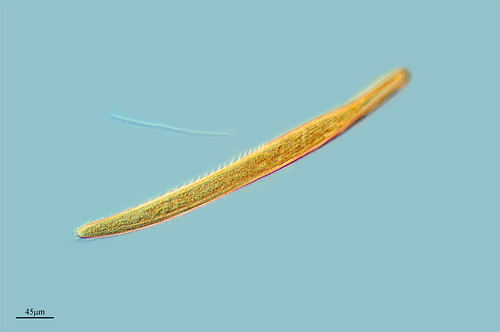- Describe:
- Three different groups: animal like, fungi like, and plant like
- Physically small, but very diverse
- characteristics of both plants and animals
- Body Plan:
- Animal like Cell
- Eukaryote--unicellular
- Plant like Cell
- Eukaryotes--uni- and multi- cellular
- Fungus like Cell
- Eukaryotes uni- and multi- cellular
- Divergent Event:
- Scientists believe that protists came from symbiosis- where one organism lives in another
- small prokaryotes in large prokaryotes evolved into protists
- Some organelles in protists strongly resemble prokaryotes
- Metabolism:
- animal like: heterotrophs
- plant like: autotrophs
- fungi like: heterotrophs
- Digestion:
- animal like- intracellular
- Circulation:
- None
- Respiration:
- None
- Nervous:
- None
- Reproduction:
- Animal like: asexual or sexual
- plant like: asexual or sexual
- fungi like: asexual
- Examples:
- Amoeba
- Paramecium
Phylum Ciliophora
- Describe - name based on their method of locomotion: they swim with cilia. Ciliophora are heterotrophic organisms. Some species prey on bacteria, while others eat algae, other Ciliophora, or detritus. reproduce sexually or asexually. Asexual reproduction by fission is the most common. Genetic exchange during sexual reproduction involves the micronucleus
- Type of Protist- fungi like
- Examples
- Spirostomum minus

- Zoothamnium pararbuscula

Phylum Zoomatiginia
- Describe - Called Zooflagellates because have one or more whiplike flagella to move
- Type of protist - unknown
- Examples
- Giardia

- Leishmania
Phylum Chlorophyta
- Describe – The division contains both unicellular and multicellular species but there are some multicelluar species. Some are free-living, some are colonial, others are coenocytic. Glucosamine is the main component of cells walls in Chlorophyta
- Type of protist – plant-like
- Examples -
- Diplomonads

- Parabasalids

- Euglenoids

No comments:
Post a Comment